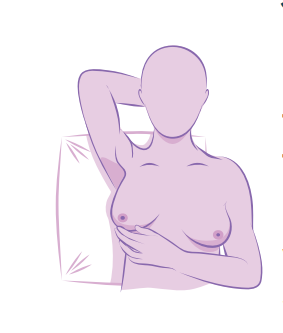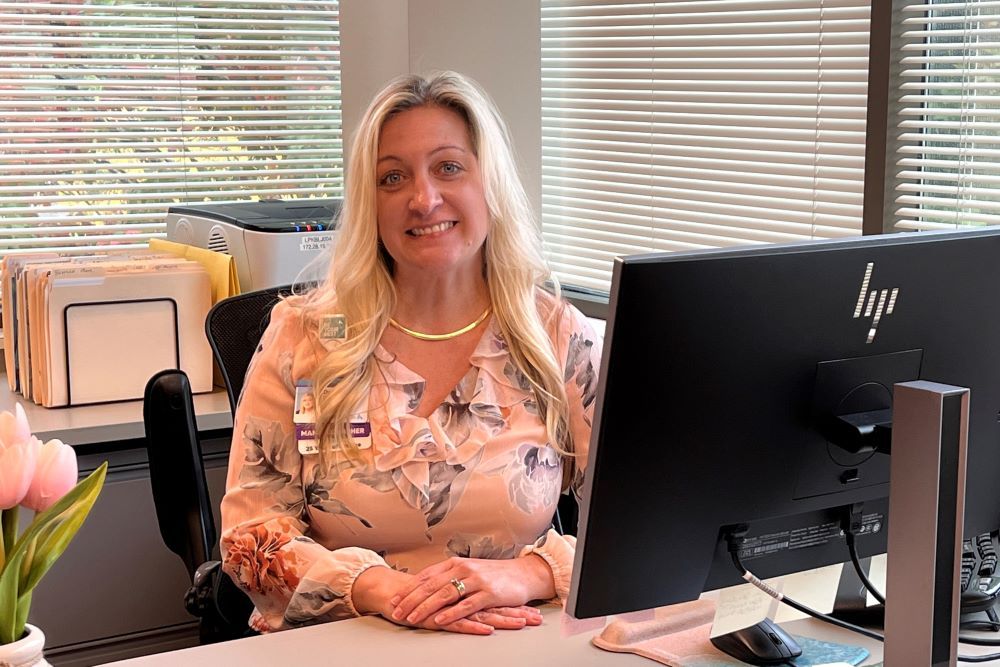Breast Health
Want to learn more about this at Kettering Health?
Detecting breast cancer early often means more treatment options and a greater chance of survival. Annual mammograms are the best way to detect breast cancer early, but for women under 40, a monthly breast self-exam can improve your breast awareness and your chances of detecting cancer.
“Having true breast awareness and knowing what your normal tissue feels like is so important so that if there is a change, you’re able to catch it early,” says Deanne Rose, manager of Kettering Health Breast Centers.
How to perform a self-exam
Breast self-exams can be done either when standing or lying down

Start with one hand behind your head, then use the pads of two or three fingers on your other hand to feel each breast in an up-and-down or spiral motion. It’s important to cover the entire breast and surrounding breast tissue, which extends to the collar bone, sternum, first rib, and underarm area.
“If we cover that whole region, we’ll be covering every bit of possible breast tissue.”
Deanne recommends covering the entire breast area with varying pressure to check for changes that are both superficial and deeper in the breast tissue. It should take a few minutes to properly examine each breast.
What to feel for
The first thing to feel for is any hard, fixed knot or lump in your breast tissue. But a lump is not the only thing to feel for.
If you notice any thickened breast tissue, redness, or pain, speak with your doctor.
What to look for

Before or after feeling for changes, visually examine your breasts as well.
“Part of a good self-exam is not only feeling your breasts but looking at your breasts to be visually aware,” Deanne says. She recommends looking in the mirror with your hands at your sides first and then raised above your head.
Look for any puckering, dimpling, or changes in size, shape, and symmetry. Also, look for changes in the nipples, such as unusual discharge or sudden inversion.
It can be difficult to tell the difference between normal and abnormal breast tissue, especially for women with dense breasts. The main thing to remember when performing a self-exam, Deanne says, is that breast tissue is usually symmetrical.
“If you feel a lump or thickening on one side, check the opposite side. If you feel the same thing, that symmetry is what you’re looking for. But if it’s asymmetrical, that could be a potential problem.”
Deanne stresses that breast self-exams alone aren’t a sufficient breast screening tool, but they are a great way to improve your breast awareness and notice changes between your annual mammograms.










